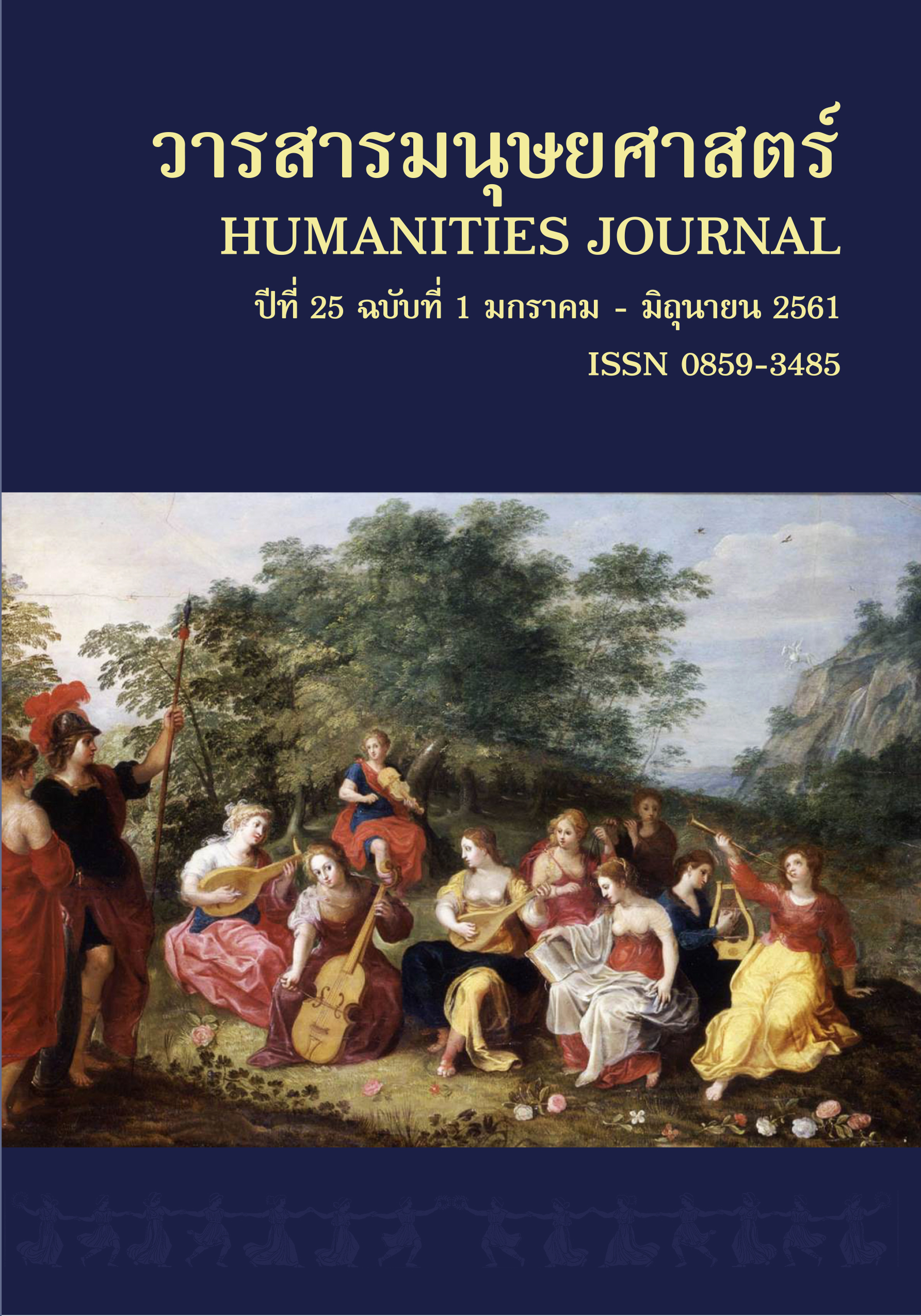ความเป็นภาษาพูดในสารโน้มน้าวใจ ‘How-to Book’ ความแตกต่างระหว่างนักเขียนเพศชายกับเพศหญิง
Main Article Content
Abstract
Persuasive language contains oral features to a high degree and these are powerful mnemonic devices in most persuasive messages. The aims of this research were to study and compare oral features used by male and female writers in persuasive messages in self-development how-to books. Two main oral features, which were the language used in expressing the writer’s emotions and that showing interactions between readers and writers, were analyzed. Six how-to books, three written by males and three by female writers, were selected on the basis of their high ranking on best seller lists followed by a purposive sampling method. The data were analyzed based on orality and literacy concept proposed by Walter J. Ong (1982) and Peter Dickinson (1994).
The findings show that how-to book writers used five strategies to express their emotions; 1) emoticons communicating the writer’s feelings 2) repetition of words and phrase 3) interjections 4) emphasizing the meaning by using diverse words 5) alterations of the spelling of words. In addition, female writers tended to use more word and phrase repetition and various interjections when compared with male writers. Moreover, male writers tended to use emoticons to convey vocal expressions while female writers tended to use them to represent facial expressions.
To show interactions between readers and writers, writers of how-to books in this study used 1) writer-oriented strategies 2) reader-oriented strategies and 3) strategies emphasizing engagement between the writer and the reader. Furthermore, male writers tended to use engagement strategies more than female writers.
Article Details
References
ชัชวดี ศรลัมพ์. (2544). การใช้ภาษาใน “ห้องสนทนา”. วารสารศิลปศาสตร์, 1(1), 77-92.
เฌอมาณย์ รัตนพงศ์ตระกูล. (2558). จิตวิทยาแค่ 1% ทาให้คุณ “เหนือ” คน. กรุงเทพฯ: ทัช.
ไทยพับลิก้า. (2559, 28 กุมภาพันธ์). งานสัปดาห์หนังสือ...ทำร้ายวงการหนังสือ?. สืบค้นเมื่อ 25 ตุลาคม 2560 จาก https://thaipublica.org/2016/02/print-6/
นวดล ร่มโพธิ์. (2558). จิ๊กซอว์ตัวสุดท้ายของความสาเร็จ. กรุงเทพฯ: อักษรสัมพันธ์.
นววรรณ พันธุเมธา. (2554). ไวยากรณ์ไทย (พิมพ์ครั้งที่ 6). กรุงเทพฯ: โครงการเผยแพร่ผลงานวิชาการ คณะอักษรศาสตร์ จุฬาลงกรณ์มหาวิทยาลัย.
พลอย เซ่. (2558). โลกต้องเห็น. กรุงเทพฯ: สต็อคทูมอร์โรว์.
ภาสกร ไวยวรรณะ. (2559). เปลี่ยนนักฝันเป็นนักลงมือทำ. กรุงเทพฯ: สต็อคทูมอร์โรว์.
มติชนออนไลน์. (2550, 25 ตุลาคม). “ฮาวทู-เสริมกาลังใจ” พระเอก. สืบค้นเมื่อ 25 ตุลาคม 2560 จาก https://www.matichon.co.th/prachachat/prachachat_detail.php?s_tag=02p0111251050&day=2007-10-25§ionid=0201
วิสูตร แสงอรุณเลิศ. (2558). ฉันเปลี่ยนเพราะเขียนเป้า. กรุงเทพฯ: สต็อคทูมอร์โรว์.
ศุภกานดา ทองบุญรอด. (2545). กลวิธีการแปลภาษาเพศชาย (วิทยานิพนธ์มหาบัณฑิต สาขาภาษาและวัฒนธรรมเพื่อการสื่อสารและการพัฒนา). มหาวิทยาลัยมหิดล, นครปฐม.
สุดาพร ลักษณียนาวิน. (2537). ประมวลสาระชุดวิชาการพัฒนาทางภาษา. นนทบุรี: มหาวิทยาลัยสุโขทัยธรรมาธิราช.
สุธาสินี สิทธิเกสร. (2545). ภาษาพาหะสัมพันธ์ในจดหมายส่วนตัว. วารสารวรรณวิทัศน์, 2(1), 111-125.
โสภา พิมพ์สิริพานิชย์. (2558). แอบทำ 1 ชั่วโมงต่อวันฝันเปลี่ยน สูตรสำเร็จ เคล็ดสร้างล้าน. กรุงเทพฯ: สต็อคทูมอร์โรว์.
อมรา ประสิทธิ์รัฐสินธุ์. (2541). ภาษาศาสตร์สังคม (พิมพ์ครั้งที่ 2). กรุงเทพฯ: จุฬาลงกรณ์มหาวิทยาลัย.
อมรา ประสิทธิ์รัฐสินธุ์. (2557). ลักษณะสองหน้าของภาษาวิชาการ: ความแจ่มชัดกับการเบี่ยงบังในการเขียนภาษาวิชาการไทย. ใน อมรา ประสิทธิ์รัฐสินธุ์ (บ.ก.), ภาษากับอำนาจ: บทความจากการสัมมนาวิชาการ (น. 78-107). กรุงเทพฯ: จุฬาลงกรณ์มหาวิทยาลัย.
Coates, J. (2004). Women, Men and Language: A Sociolinguistic Account of Gender Differences in Language (3rd ed.). Great Britain.
Dickinson, P. (1994). Orality in Literacy: Listening to Indigenous Writing. Canadian Journal of Native Studies, 14(2), 319-340.
Jespersen, O. (1964). Language: Its Nature and Development and Origin. New York: Norton.
Lakoff, R. (1975). Talking Like a Lady. In The Written World (pp. 533-543). New York: Harper and Row.
Lakoff, R. (1982). Persuasive Discourse and Ordinary Conversation, with Examples from Advertising. In D. Tannen (Ed.), Analyzing Discourse: Text and Talk (pp. 25-42). Washington DC: Georgetown University Press.
McGee, Micki. (2005). Self Help, Inc.: Makeover Culture in American Life. New York: Oxford University Press.
Ong, Walter J. (1982). Orality and Literacy: The Technologizing of the Word. London: Methuen.

